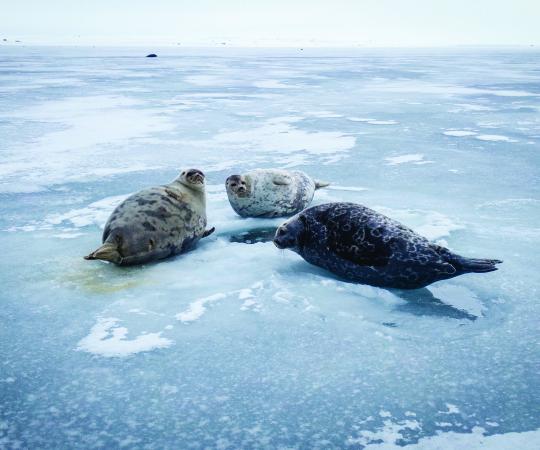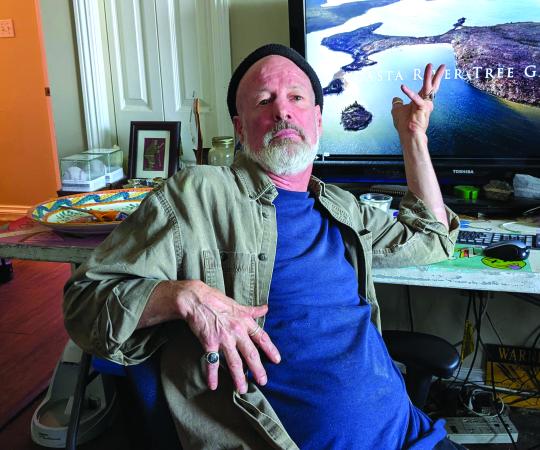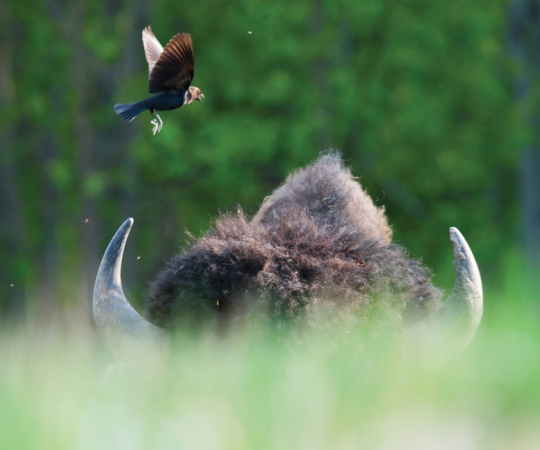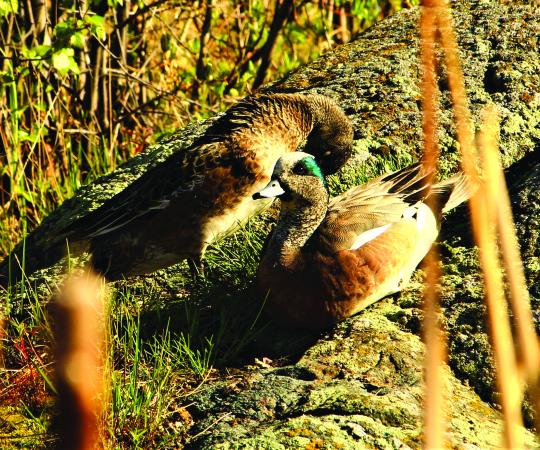Last March, Solomon Awa walked the flat, frozen landscape outside of Iqaluit in search for the perfect snow. Reaching down, he shoveled a small mound into his mitted hand and flattened it, deciding whether its texture would work for the building project he had in mind.
“The [snow] texture should be around a seven on a scale from one to 10,” he explains. “A 10 is almost like ice. It’s too hard to cut with a knife.” A one, according to Awa’s scale, is powder. The challenge is finding just the right snow.
Awa and Jacopoosee Tiglik led a team of iglu builders, surveying the snow around Sylvia Grinnell Territorial Park. There, they conducted the texture test repeatedly until they had gathered several qamutiit worth of snow for their construction project.
Then the team got to work, shaping one snow block after another, stacking and fitting them on top of each other at the park until their qaggiq (giant iglu) was complete.
The Inuit arts organization Qaggiavuut! commissioned the 700-square foot iglu for a two-day spring event. In all, more than 1,500 people would gather under the qaggiq’s snow-packed roof to listen to locals play live music, dance and tell stories.
Awa barely left the qaggiq during the festivities. “It was exciting,” the iglu expert says. “There was this amazement that we were able to make a qaggiq. Even though nowadays we don’t build iglus all the time, it was awesome to see people be able to put together this massive iglu.”
It had been many years since a qaggiq had been erected in Iqaluit. But Awa says when locals are out on the land and are unable to get home on time, they will often craft a small iglu for shelter within a matter of hours.
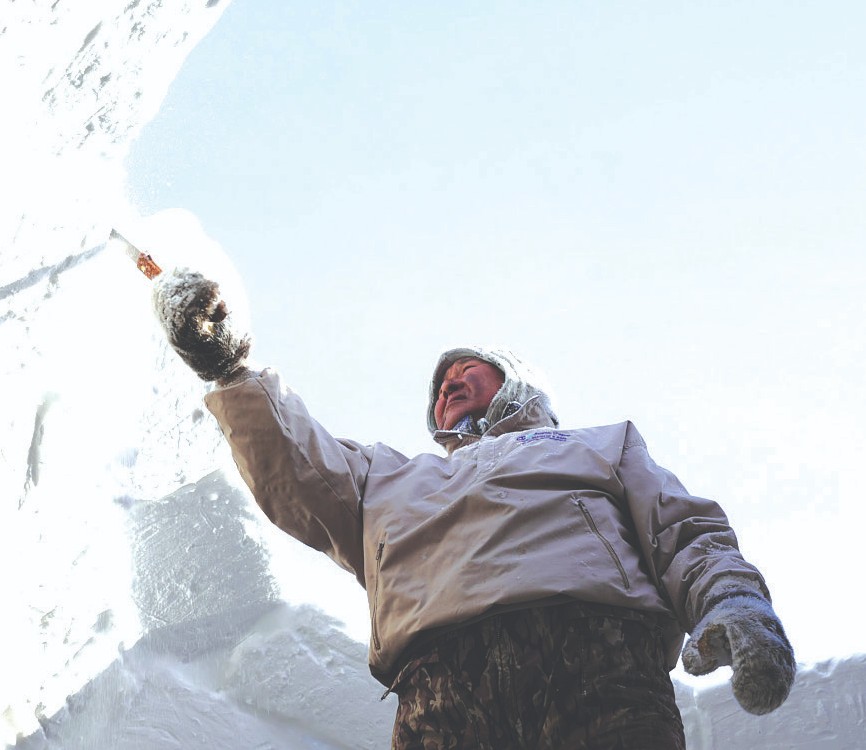
The windswept and treeless Arctic provides the ideal conditions for creating the snow blocks suitable for an iglu. But elsewhere in Canada, and even the North, the snow is not as compliant. So what is it that makes the snow better for iglu-building in one region over another?
Wind, Water, and Wide-Open Spaces
Rosy Tutton, a Yellowknife-based hydrologist, says that snow’s characteristics really depend on topography and climate. She categorizes snow into six common classifications, which are mostly named after ecozones where you might expect to see such snow. (Prairie and maritime are two types, for example.)
That’s all to say snow forms, appears, melts and even sounds differently depending on its specific location and temperature. It also depends on the snow’s water content.
If temperatures rise to one degree Celsius, the snow will stick around longer in drier climates than wetter ones at that same temperature, Tutton says. “[That’s] because it’s in a solid form and doesn’t have super high-water content,” she says, using Vancouver as an example. “The snow in Vancouver is so wet, it has pockets of water in the snow. So if it’s already water you don’t need that extra energy to change phase.”
Wind also plays an important role in determining the texture of snow. Above the treeline, there is nothing to block out the pounding wind, which packs the snow together and hardens it. The more wind that rushes over it, the harder it gets— making slabs of snow feel almost as tough as concrete. That tightly compacted snow can make for good iglu-building.
In much of the North—including most places surrounded by forests in the Yukon or NWT—this type of hard snow is hard to come by. However, as Awa points out, “you can probably find [it] on Great Slave Lake, where the snow has been packed with the wind.”
That’s exactly where Yellowknife’s Snowking and his dedicated crew of snowsmiths construct their giant snowcastle every year. While the snow is harder out on the expanse of ice, the builders still use snow blowers and giant wooden molds to pack it together before they can use it for walls. The massive snow structure hosts concerts and live events almost every day in March, with guests parking their cars on the frozen lake and spending hours enjoying the longer and milder days, protected from the wind by the sturdy castle walls.
Studying The Snow
As our climate changes, it’s crucial that people continue to study snow to understand how a warming planet might affect our livelihoods—and our ability to celebrate spring in a giant snowcastle or qaggiq.
“As we have less and less snow cover, our ground and climate will likely heat faster and faster,” Tutton explains. That, she says, influences everything from permafrost thaw to lake ice development. “On an even more local scale, people depend on reliable snow cover for snowmobile transportation,” says Tutton. “I can go on and on.”
Traditional knowledge keepers, community members and scientists are doing what they can to preserve and monitor the snow. SmartICE, based out of Nunatsiavut, empowers community members to measure and share local ice thickness conditions to let others know when it’s safe to venture out. It also helps keep track of ice thickness over the years to study how it’s changing.

There is even a non-profit based out of California, Arctic Ice Project, that’s trying to save the snow. It proposes adding layers of reflective glass over areas particularly vulnerable to the sun’s rays as a way to stave off melting. The organization has so far tested it out in parts of Canada and the U.S. And while it has shown promising results so far (adding a few layers of glass powder to a pond in Minnesota made young ice 20 percent more reflective), many scientists worry about the ultimate effects of geo-engineering.
Still, the snow won’t be disappearing from the North any time soon—nor will our monuments to it.
Back in March, Awa took in his handiwork, staring up at the 14 levels of interlocking snow blocks as thin streams of light seeped through the joints, causing the structure to sparkle.
Awa has been constructing iglus since he was a boy and he’s grateful for the ability to continue making snow structures with the skills his father had taught him long ago. It’s a tradition Awa is happy to carry on with the qaggiq, allowing others to learn from him and to experience the same joy he grew up with.
He couldn’t help but stand there smiling at what he helped to create. All the while, people danced around him, their heavy soles tapping away on the solid white ground to the sound of music.


